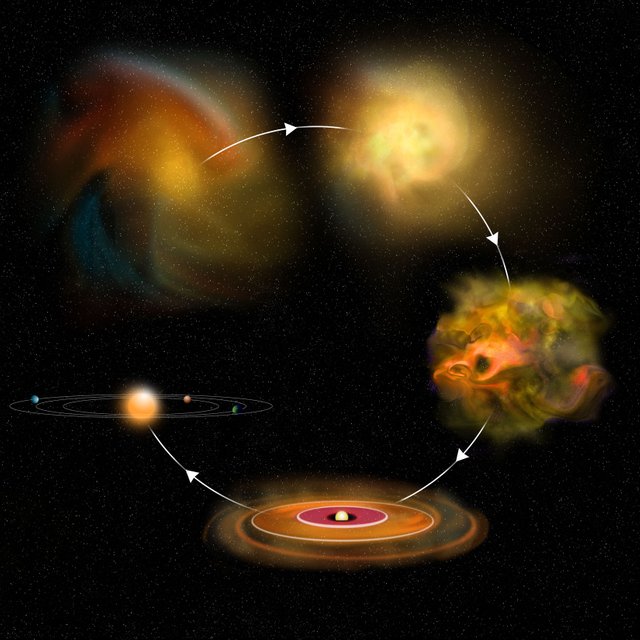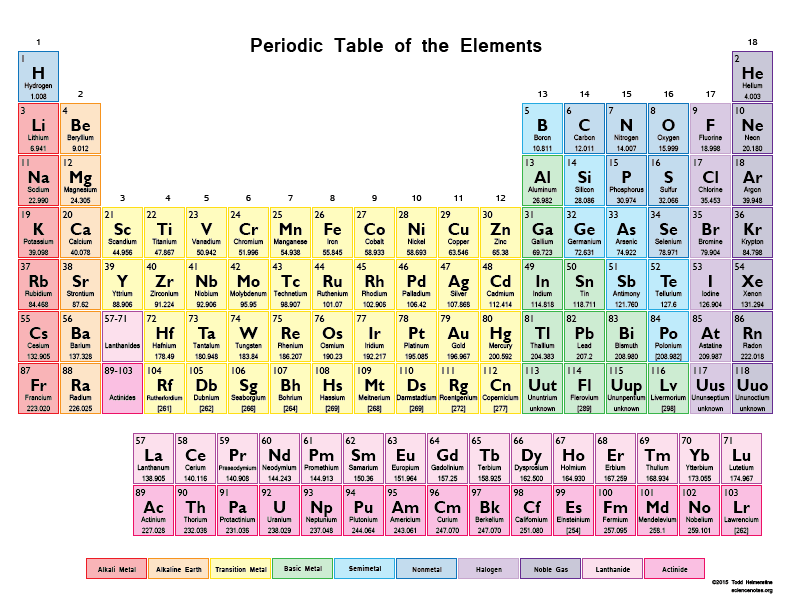ENGINE OF THE SPACE: THE RACE FROM #1 TO #118
My following post is about the stars in the infinite night sky, which we see. How they run this complex machine named universe. Also, the race from position #1 to #118 denotes about the elements that form this universe. There are questions in the post which I have assumed some answers to it, but there may be some other answer to it also, and if you know do reply back in the comment box.

The picture above shows a stellar nursery. A stellar nursery is the birth place of a star. It is a dense cloud of gases and dust. Although the formation of a star cannot be seen through it by using a telescope because this clouds are very dense and therefore opaque. Therefore, they are found out using infrared telescopes. This nurseries would be found in very distant and remote places far from any other sun. The temperatures at such places would be just 10-20 K, just a little above the absolute zero.

The formation of sun would start from the stage of gases accumulating together at a point. This would be mostly caused by the effect of gravitational force coming from a distant source. After a stage when sufficient amount of gases has been accumulated, the core itself exerts its self-gravity on the nearby gas particles to accumulate further. This would form a giant cluster of accumulated dense gases. The in falling gases from vicinity will add their kinetic energy on the cluster. This would thereby exert heat as well as great pressure on the gas particles in the core. When it reaches a sufficient threshold, nuclear fusion would begin. Once the fusion starts, itself it would generate a huge amount of energy in terms of heat, which will carry on further nuclear fusion. It is a chain reaction, once started goes on reacting until it does not run out of fuel. So the stars we see, took birth and would die out some day, even our own sun. But that would occur not before some few billion years. “Phew”
Now, once the sun is formed, the big force named gravity too is formed. It initiates birth of planets and other inter planetary systems too. Slowly a self-sufficient solar system is into existence.
Though I have highly compressed the various stages of the formation of sun, a summary of the process is provided. As such the formation of a star is not a very easy process as the stellar nurseries aren’t a small place but gas clouds covering area of many light-years. It takes millions of years for a glowing hot star to be formed from mere gas dust clouds.
All in all it is this stars to which is the credit of running the whole universe is. Whether be it creating life on earth or other such planets on creating gravity to form solar systems, moving asteroids, meteors etc. Or be it creating of the black holes or most simply the different elements in the universe. All are because of the stars, which i rightly call the engine of the universe.
-> Now, the thing that I don’t understand is that why do gases in open space form clouds. In open space where there is vacuum, why do gases get accumulated at one place and why not try to cover all the empty space. A gas normally would try to occupy all the space in a container in which it is placed. Then why doesn’t the same occur in the space. The only answer I can think of is that, it may occur due to influence of gravitational force from distant sources. Or could it possible that, gases after a critical point of minimum gravity, they stop expanding? On the internet you can find the experiment of an astronaut in space where he squeezed a wet towel and the water behaved like jelly. But this could be explained rather easily due to the strong cohesive water between the water molecules.
-> Another question that I come up with is that how much stars would be formed from a stellar nursery?
In general I would suppose that only one star would be born from one nursery. This is because such gas clouds are at places where there is no heat source in vicinity. But when first star is born, it would release heat energy which would stop formation of any other star in that nursery.
A star apart from being a source of heat and gravitational force, it also is the birthplace elements of apart from hydrogen and helium. On earth, in nuclear reactors, we bombard heavy nucleus of uranium, plutonium with neutrons, this results in nuclear fission. Nuclear fission is the process of breaking of heavy elements into lighter elements. But in stars, nuclear fusion creates newer elements from single element of hydrogen. Hydrogen fuses to form helium, and later on other elements like lithium, beryllium, boron, carbon etc are formed. In small stars, this reaction goes on until iron is formed. Elements after iron are formed by explosion of large stars like supernova. Therefore elements upto iron are abundant and rest are very less abundant. A question would arise that elements lithium and beryllium are also scarce even thou having mass of 3 and 4 respectively. The answer to it is they are rare because they are used up in other reactions taking place in the star.

But as we see the periodic table, a question would always arise why does the elements stop after the atomic number 118? If someone answers that the stability of the atoms decrease as atomic number increase, it is true but certain radioactive elements with half life of only some minutes also exists. Theoretically also elements above 118 should exists and attempts are made to synthesis one of them also. But also the question would arise then, how much big can an atom be? One of the scientist calculated that it could be only upto 137, because the electrons moving around the nucleus will have to cross the speed of light. However the answer 137 given by him is not certain as many other scientists have come up with a greater number.
Could it be possible that the elements beyond 118 are the ones we today call as the “dark matter” ?